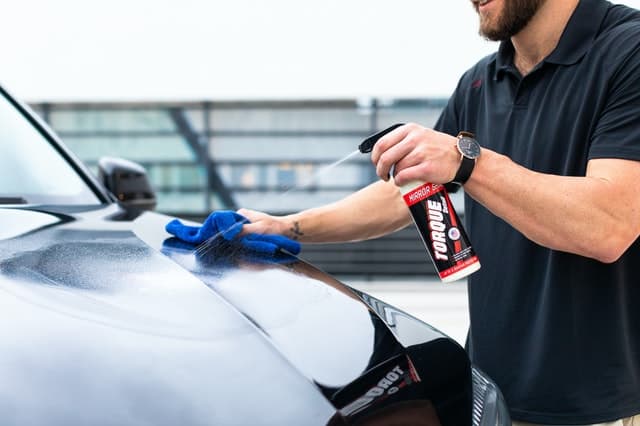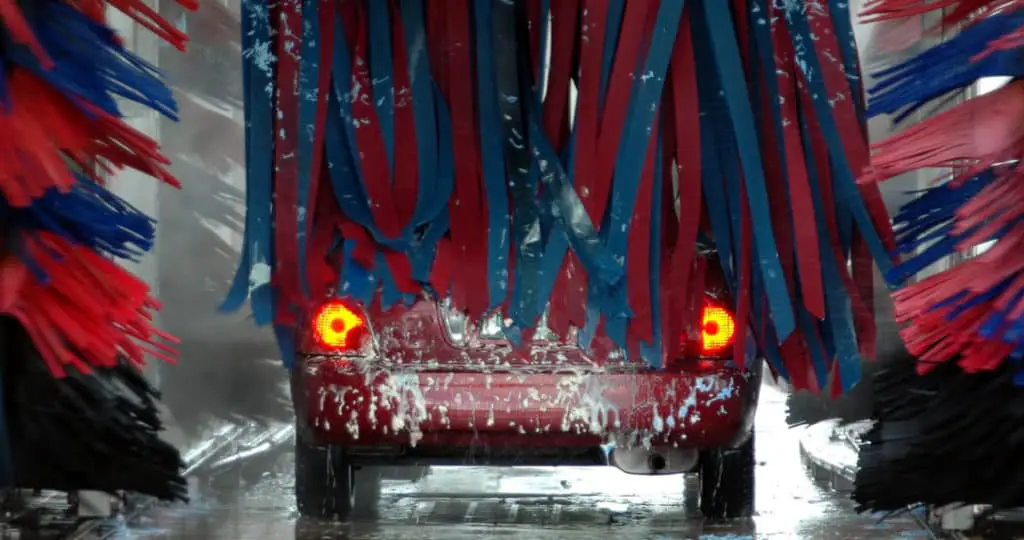Last Updated on January 22, 2025 by Nate Schnell
Refilling your car’s oil is a routine task, but accidents happen. If oil spills onto your car’s paint, it can leave unsightly stains that are frustrating to remove. Acting quickly and following the right steps is essential to prevent long-term issues such as paint bubbling, blisters, or fading. Here’s how you can safely and effectively remove oil stains from your car paint.
Step-by-Step Guide to Removing Oil Stains
Pre-Treating the Stain
When oil spills onto your car, the first step is to act fast. Avoid immediately wiping the oil with a cloth, as this can spread the stain to other areas. Instead:
- Use a clean microfiber cloth to soak up the oil without scrubbing.
- Gently dab the stain, allowing the cloth to absorb as much oil as possible.
- Avoid using a new microfiber cloth, as it will likely be unusable for future car washing.
If the oil stain has already dried, skip this step and proceed to washing the car.
Wash the Car
Washing the car thoroughly is crucial before treating the stain with a cleaning solution. Dirt and debris can cling to the oil, making it harder to remove. Here’s how to prep your car:
- Use a pressure washer or the two-bucket method for washing.
- Focus on the stained area to remove loose dirt.
- Rinse thoroughly to ensure a clean surface for the next steps.
Skipping this step can reduce the effectiveness of the cleaning solution and make the stain harder to dissolve.
Apply Tar Remover
Tar remover is a powerful cleaning solution designed to dissolve tough stains, including oil, grease, and fuel marks. It’s more effective than standard car wash soap for tackling oil-based stains. Follow these steps:
- Ensure the car is completely dry before applying the tar remover.
- Apply the tar remover to a clean microfiber cloth.
- Gently dab the stained area or use circular motions to distribute the product evenly.
- Let the tar remover sit as per the product’s instructions to allow it to dissolve the oil.
- Wipe the area clean with another microfiber cloth using quick, linear motions.
If the stain persists, repeat these steps until it is fully removed.
Apply Wax (Optional)
After removing the stain, check the paint for any fading or discoloration. If the paint appears dull, applying a high-quality car wax can help restore its shine and add a protective layer. Spray waxes are convenient for quick application, while paste waxes provide longer-lasting results.
When to Seek Professional Help
If the oil stain has been left untreated for an extended period or the car has been exposed to direct sunlight, the stain may harden and become more challenging to remove. In such cases:
- Visit a professional detailing service for advanced stain removal techniques.
- Professionals can use specialized tools and products to restore the paint without causing damage.
Common Mistakes to Avoid
Using WD-40
WD-40 is often mistakenly used to remove oil stains. While it’s effective for corrosion prevention, it won’t dissolve oil stains on car paint. Using the wrong product can make the stain worse or damage the paint.
Using Rubbing Alcohol
Rubbing alcohol, even when diluted, can harm your car’s paint. Its harsh chemical properties can strip away protective layers and cause discoloration.
Skipping Wax Application
Failing to reapply wax after removing the stain can leave your car’s paint vulnerable to further damage. Wax adds a protective layer that helps maintain the paint’s integrity.
Frequently Asked Questions
What Happens If Oil Spills on Car Paint?
Oil spills won’t directly damage your car’s paint, but they can leave stubborn stains. If not removed promptly, these stains can lead to long-term cosmetic issues like discoloration or paint imperfections.
Can I Use Household Products to Remove Oil Stains?
Household products like dish soap or degreasers may seem like viable options but are not recommended. They can strip the wax and protective coatings, leading to further damage.
How Long Can an Oil Stain Stay on Car Paint Before It Becomes Permanent?
The longer the stain sits, the harder it will be to remove. Prolonged exposure, especially in direct sunlight, can cause the oil to seep into the paint’s pores, making professional treatment necessary.
By following these steps and avoiding common mistakes, you can remove oil stains from your car paint effectively and keep your vehicle looking pristine. For persistent or severe stains, don’t hesitate to consult a professional for assistance.



